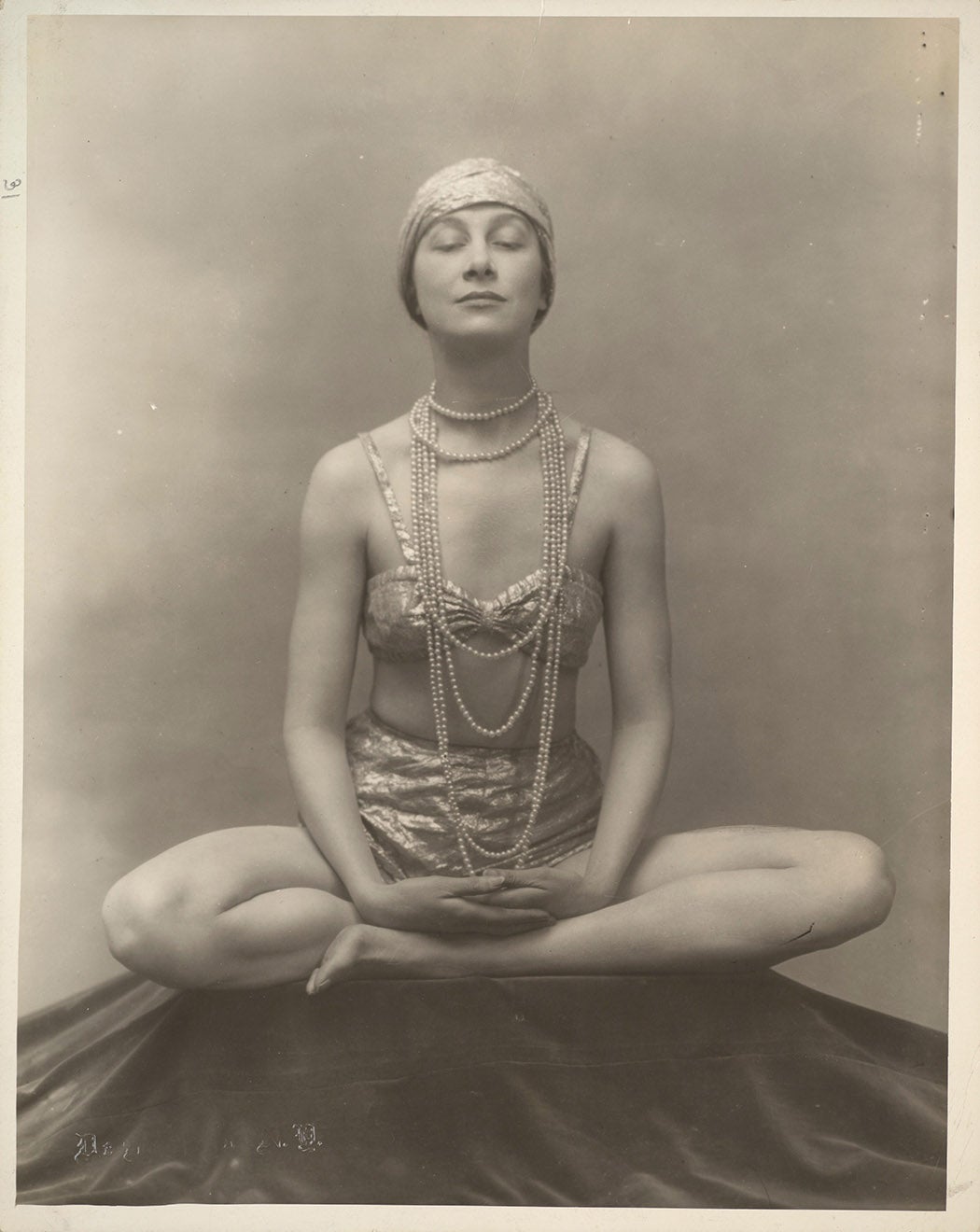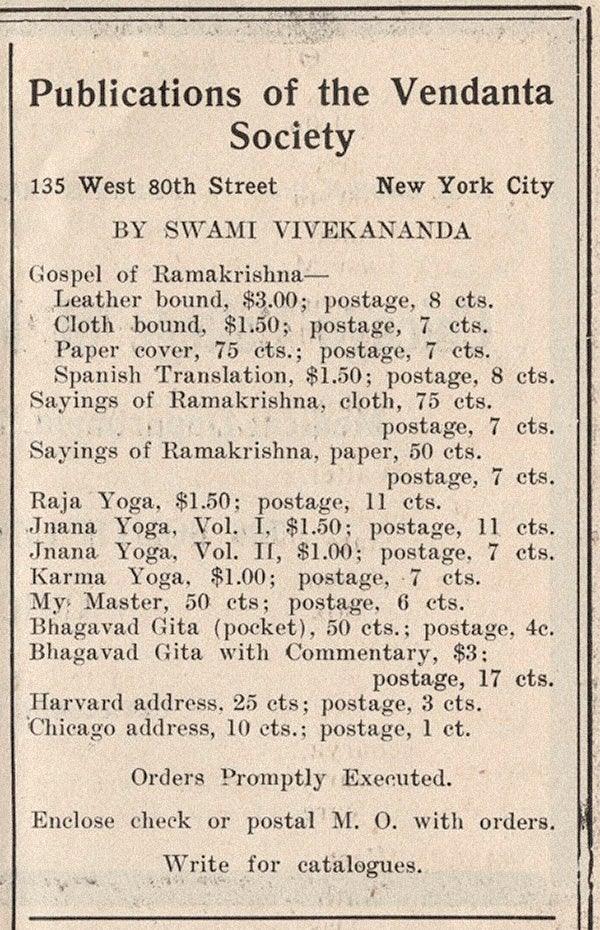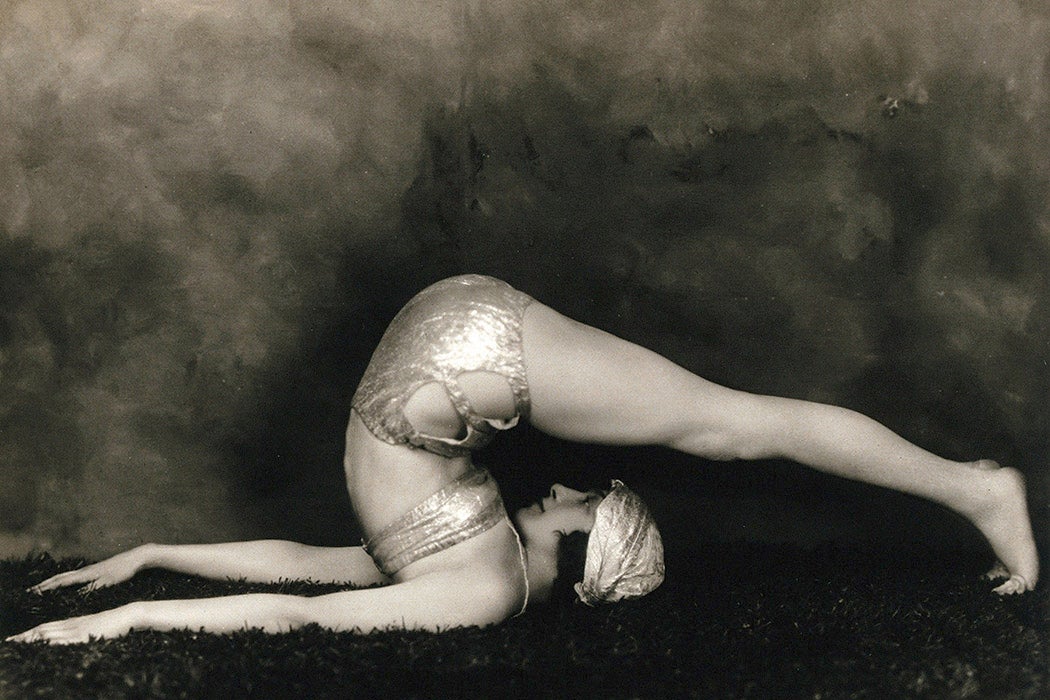“Eve is eating the apple again,” wrote Mabel Potter Daggett as she warned her readers of the new Eastern propaganda known as yoga. Her words of caution—specially directed at American Christian men—appeared in 1911, in an ominously titled article, “The Heathen Invasion.” Daggett, an American writer and journalist, perhaps considered it her responsibility to advise her brothers-in-faith of the reappearance of the first sin in the form of yoga.
When yoga was introduced to America, by many accounts, in 1893 by Swami Vivekananda at World’s Parliament of Religions in Chicago, it found little acceptance in the then largely Christian American society. “As early as the nineteenth century, many Christian leaders warned that yoga was not simply about strengthening one’s own religious identity and commitments, nor was it simply about attaining physical fitness and reducing stress,” notes Andrea. R. Jain, professor of Religious Studies at Indiana University. “Rather, it was a Hindu religious movement that was antithetical to Christianity.”
The American people had two options: heeding their religious leaders’ warning that yoga was “a discipline that upsets one’s allegiance to the religion of one’s birth” or ignoring their concerns and accepting it as “a system that brings greater physical and mental health,” reads an article by Laura Douglass in the International Journal of Yoga Therapy. While these dichotomous assessments seem melodramatic today, practicing yoga at the turn of the twentieth century was not inconsequential, especially for women.

Like wildfire, yoga quickly spread across America, much to the astonishment and disappointment of Christian leaders. The vogue of yoga, or the “eastern philosophy, the emblem of which is the coiled serpent,” as Daggett described it, brainwashed citizens of educated Western society. Women’s participation was certainly a matter of great concern, as the Christian clergy worried women might be more easily misled from their religion by the false promises of eternal youth by the yoga gurus.
Weekly Newsletter
In 1894, a year after the World’s Parliament of Religions, Vivekananda founded the Vedanta Society of New York in response to the growing interest in yoga and at the urgent request of his disciples. The Indian reformer’s Society based its teachings on Vedanta, which is one of the world’s oldest spiritual philosophies and the foundation of Hinduism. As a philosophy, Vedanta recognizes the same divine inspiration in all religions.

“There is now a flourishing Vedanta Society which claims more than 5,000 women sympathizers in New York alone,” warned an anonymous author in a 1911 Current Literature article of the ”crumbling” faith of the nation.
What led the disciples to join the “cult”—as the group had come to be known? India, the birthplace of yoga, still had numerous cases of child marriage and education for Indian women was a topic greatly unheard of. Surely, the American women had more freedom and rights than their Eastern counterparts. Why then did the American women of Christian faith find themselves enticed by the practice of yoga?
Daggett’s answer made it seem simple:
It is the promise of eternal youth that attracts woman to yoga, the promise which is found intertwined with most of the pagan religions. This yoga philosophy opens the door to subtle mysteries. The yogi, as the student who masters it is termed, is promised the dominance of natural law.
Disciples of this mystical movement weren’t just practicing yoga—true to the concerns of religious leaders, some new Western believers had turned their backs on the Christian faith and ventured out to follow the Indian pagan religion of yoga.
“The nineteenth century saw assaults on regionally dominant expressions of Christianity in both the United States and England,” explains religious historian Gwilym Beckerlegge, adding, “Some had entirely rejected Christianity and other forms of religion.” Many of the American yogis were women of wealth, and unusual culture and refinement. So consumed were they by their new belief, these women yogis readily invested their wealth and life for the progress of yoga on the American soil.
One Mrs. W. E. Stone, for instance, left the country in a complete frenzy. Mrs. Stone, wife of Winthrop Stone, president of Purdue University, had a loving husband and young children, friends, an exclusive lifestyle, and respect in society. But a few years after her introduction to yoga, Mrs. Stone threw it all away—according to a 1908 article by The Washington Times Magazine—for “a life of semi-barbarity among the mystics, the fakers, and the dervishes of East India whereas a devotee of a weird intangible faith which is called the yoga she may satisfy her heart’s desire in the contemplation of the occult and the supernatural.”

With thousands of white women flocking to yoga, Western news outlets warned husbands and men about the “cult,” claiming its swamis were “abducting” and “stealing” white women. Whether it was by an act of magic or hypnosis, the swamis had control over their followers, including the Western white women who were taking up a yoga practice.
If Mrs. Stone’s case instilled fear in the hearts of the Americans, then that of Sara Bull turned that fear into anger and hatred for the Eastern yogi culture. Presiding over one of the most prestigious salons in Massachusetts, Bull, the widow of the famous Norwegian violinist Ole Bull, was a woman of wealth and stature. After her experiments with Theosophy and New Thought, Bull found herself enchanted with Vedanta, and by the mid-1890s,had embraced the yogi lifestyle. She soon became one of the most devoted disciples of Swami Vivekananda and financed much of his work in America and in India. Before she passed away, Bull willed most of her fortune to the Vedanta Society.
The will caused a scandal when Bull’s daughter contested it the court, claiming her mother was of “unsound and disordered mind” and under “undue influence” of people who conspired to snatch her wealth. The case didn’t just ignite a spark against the yogis but against all Indian immigrants as newspapers covered the story with “racist stereotypes of swarthy foreign charlatans masquerading as holy men and seducing pure naïve white women.” After weeks of hearings, Bull’s will was set aside by the courts on the grounds of “mental incapacity and undue influence.”
Sara Bull wasn’t the lone white female financier of the Vedanta Society. A young Sarah Farmer, following the World’s Parliament of Religions, founded and invested her personal finances in a summer school of philosophy at Green Acre in Eliot, Maine. She also made it known that she intended to bequeath most of her estate to the Baha’i community. Once news of her intentions and investments reached her family, they committed her to an asylum in Massachusetts. Mabel Potter Daggett also tells the story of Ellen Shaw, of Lowell, Massachusetts, whose relatives:
petitioned the courts that a conservator be appointed to prevent her from bestowing her property on the sun-worshipers… Last Spring, Dr. William R. C. Latson, a New York physician, was found mysteriously dead in his Riverside Drive apartment, and Alta Markheva, the young Jewish girl who called him her man god, or ‘guru,’ in the study of yoga, attempted to follow him in suicide. Her sister, Mrs. Rebecca Cohen, moaned: ‘This new religion seems to me to be of the devil. It has disgraced my sister and taken her from her people.’
As fear of yoga continued to spread across the US, Congress passed the White Slavery Act in 1910. In the early twentieth century cultural anxiety took over the country with thoughts of loss of the Christian nation to immigrants and slave trade of the white women. Yoga, many believed, was a religion that worshiped men instead of images of a god made of stone and wood. The white women disciples of swamis in ashrams bore the burden of the most menial service. Daggett reported with much disgust, “At the West Cornwall Ashrama, which is Swami Abhedenanda’s ‘peace retreat,’ the labor of his household is done by American women who are content to toil in his kitchen in the heat of summer, and who even milk the cows in the devotion of their discipleship. They serve absolutely without pay or compensation of any material kind.”
Since its beginning, yoga has had disciples and followers of all kinds. It wasn’t just women; American men, too, found themselves intrigued by yoga and practiced the Indian philosophy.
Pierre Bernard was an early American social radical and yogi who attempted to re-introduce yoga in the west as “esoteric gymnastics” and as the way to keep oneself “young and happy.” With Blanche DeVries, his wife, Bernard tried to disassociate yoga from religion and sexual deviance, helping him gain greater legitimacy than Indian gurus and previous Western yogis.
Joseph Laycock, a professor of religious studies at Texas State University, notes:
Bernard and DeVries’s brand of yoga was distinct from the yoga promoted by either Hindu apologists or Western occultists. The couple presented yoga as practical, moral, and scientific while still preserving much of its novelty and mystique. They marketed yoga as a resource that could produce stronger, more vigorous men and graceful, independent women.
However, despite his rigorous attempts to reinvent yoga, Bernard was still ostracized for his work. He and his students were repeatedly pressured by law enforcement, the media, and the Christian clergy to forfeit their practice. “For years, they were run out of city after city,” writes Jain. It wasn’t until 1918 that Bernard could establish his yoga club in Nyack, New York. “Although the Club survived,” Jain adds, “there was a constant stream of yoga-phobic responses to what were perceived as exotic and amoral activities at the Club.”
Yoga’s acceptance in the West has been rocky at best, and its adherents have been the victims of xenophobia. But the number of people who feared its association with non-Christian beliefs and ostracized family and friends who found yoga rewarding and beneficial diminished as increasing numbers of Americans gave it a try. Today, there are over 40 thousand yoga (and pilates) studios across the country, a sure sign of yoga’s durability and enduring appeal.
Editor’s note: We regret that an earlier version of this story mistakenly claimed there are over 41 million yoga and pilates studios in the United States. That would be 41 thousand, and by now the number is actually even higher.







